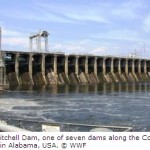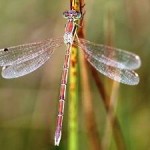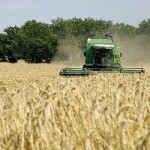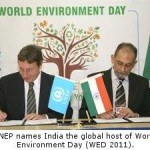The Plastiki Story:
- The Plastiki Expedition was conceived and developed after Adventure Ecology founder; David de Rothschild was inspired by a UNEP report named ‘Ecosystems and Biodiversity in Deep Waters and High Seas’ in 2006 and Thor Heyerdahl‘s epic 1947 expedition, The Kon-Tiki.
- A compelling and pioneering expedition was created with the goal to not only inform, but to educate the world that waste is fundamentally inefficient design.
- Design, research, development, construction and sea trials took place in San Francisco.
- The Plastiki set sail from San Francisco on 20th March 2010.
- Crewed by six people at any one time – David de Rothschild (Expedition Leader), Jo Royle (Skipper), David Thomson (Co-Skipper), Graham Hill (Founder of Treehugger.com), Matthew Grey (Expedition Co-ordinator), Luca Babini (Photographer), Vern Moen (Myoo Media Film-maker), Max Jourdan and Singeli Agnew (National Geographic Film-makers).
- Completed in four legs – San Francisco – Kiribati – Western Samoa – New Caledonia – before reaching the Australian Coast.
- Tens of millions of people are now aware of the Plastiki and her message. Since launch, over 90 media interviews have been conducted from the vessel, resulting in more than 300 print articles, 200 radio and TV broadcasts, including the Oprah Winfrey Show. There are over 800,000 search terms relating to Plastiki and 52,200 related images on Google.
The Vessel:
- The Plastiki’s core principles of ‘cradle-to-cradle’ design and biomimicry were realized by a multi-faceted team from the fields of marine science, sustainable design, boat building, architecture and material science.
- The Plastiki receives 68% of her buoyancy from 12,500 reclaimed plastic soft drink bottles and the super structure is made of a unique recyclable plastic material made from a self-reinforcing PET called Seretex.
- The mast is a reclaimed aluminium irrigation pipe. The one-of-a-kind sail is hand-made from recycled PET cloth.
- The secondary bonding is reinforced using a newly developed organic glue made from cashew nuts and sugar cane
- The Plastiki is ‘off-the-grid’ relying primarily on renewable energy systems including; solar panels, wind and trailing propeller turbines, bicycle generators, a urine to water recovery and rain water catchment system and a hydroponic rotating cylinder garden.
Why?
- It is estimated that almost all of the marine pollution in the world is comprised of plastic materials. The average proportion varied between 60% and 80% of total marine pollution.
- In many regions in the northern and southern Gyres, plastic materials constitute as much as 90 to 95% of the total amount of marine debris.
- Scientists estimate that every year at least 1 million seabirds and 100,000 marine mammals and sea turtles die when become entangled in plastic pollution or ingest it.
- According to Project Aware, 15 billion pounds of plastic are produced in the U.S. every year, and only 1 billion pounds are recycled. It is estimated that in excess of 38 billion plastic bottles and 25 million styrene foam cups end up in landfill, and although plastic bottles are 100% recyclable, on average only 20% are actually recycled.
- The Plastiki crew noted that whilst many thousands of miles away from land, humanity’s fingerprints were visible throughout. On one day alone, a garden tray, two jerry cans, buoys and a large white PVC tray floated by, with the usual plastic bags, bottles, lids and styrene foam containers. Whilst swimming, they continually noticed that beneath the surface there are millions and millions of molecular pieces of plastic photo degraded by salt and sunlight, often known as mermaid’s tears.
- During the entire voyage, the Plastiki crew have seen no sharks and have only caught a couple of fish, whereas during the Kon-Tiki expedition of 1947, they ate fish everyday and couldn’t enter the water for fear of sharks, whilst the Plastiki have seen hardly any.
The Plastiki’s Philosophy:
- It’s about recognizing that waste is fundamentally a design flaw (it does not appear in nature).
- It’s about a better understanding of the materials and their lifecycle’s used in our everyday lives and using cyclical ‘cradle-to-cradle’ philosophies rather than linear thinking when it comes to how we design our world.
- It’s about being curious and open, being prepared to let go of assumptions in order to undertake a new ‘Planet 2.0’ way of thinking and acting.
- It’s about being collaborative and curious so to engage multiple perspectives, skills, opinions and organizations.
- It’s about re-integrating back into the web of life by recognizing and reducing our human fingerprints on the natural world.
- It’s about moving on from just articulating the problems to inspiring action of the solutions.
- It’s about encouraging the world to reduce, reuse, recycle, rethink and ultimately refuse single use plastics.
- It’s about acknowledging that the list of solutions available is far greater than the list of problems.
- It’s about delivering a spectacular global “Message in a Bottle”.
What Next?
- A lasting legacy of the Plastiki will be its capacity to shift public thinking and perception from plastic as the enemy to plastic becoming part of the solution. To solve the plastic pollution and waste issues at large will require a re-think of how we currently use, reuse and ultimately dispose of plastics and waste products.
- Post arrival, the Plastiki crew will take part in a number of talks, keynotes and discussions to explore the solutions to the increasing damage of the natural world resulting from plastic pollution. The vessel itself will be exhibited at the Australian National Maritime Museum as a representation of the available solutions in our repairing and reintegrating with the natural world.
- Long-term projects include the Plastiki Pod; each pod will be tailor-made to help solve ecological issues specific to each of the islands that the Plastiki visited during her voyage across the Pacific. Short term and long term solutions will be addressed with educational resources made available to the local communities.
- One of Plastiki’s goals and lasting legacies will be to see a significant reduction in the amount of manmade waste heading out to landfill and sea. They believe that with a small effort and some smart thinking, everyone could reduce their use of single purpose plastic bottles, plastic bags and styrene foam. It’s achievable if we all work together on making small changes in our lives like the MyPlastiki Pledge or remembering the 5R’s: reduce, reuse, recycle, rethink and ultimately refuse plastic waste. Those interested to make their pledge for a plastic free ocean and more positive, ecological initiatives, please log on to myplastiki.com.

Source: UNEP Press Release dated July 26, 2010.
Related Features:













